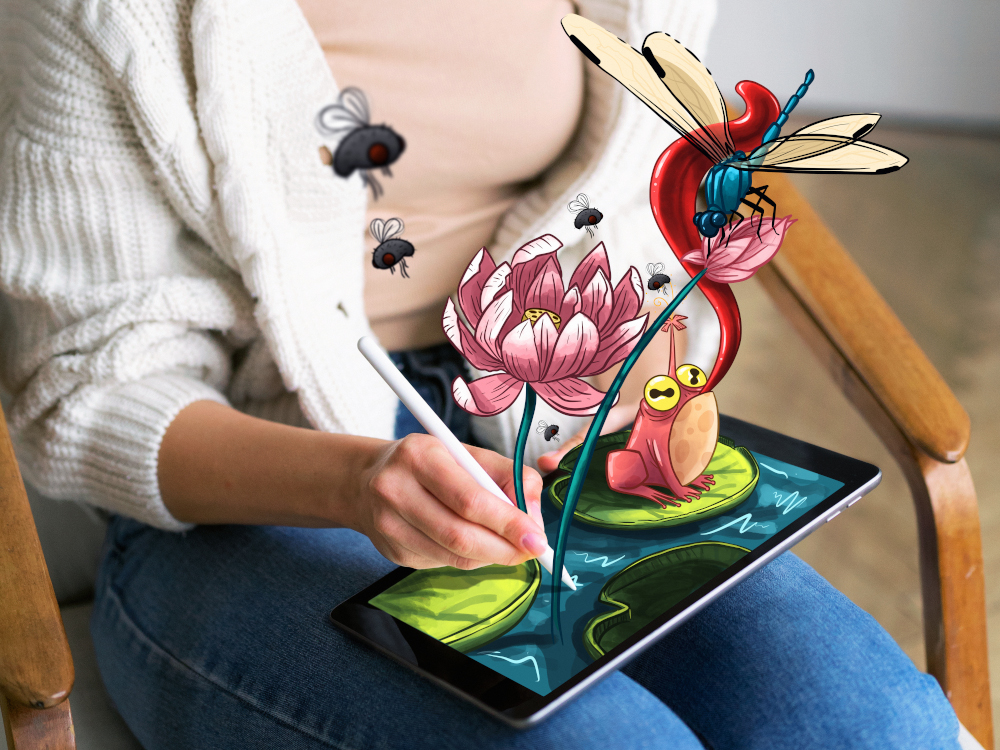
Iniciar-se na arte digital é um passo emocionante em um mundo de novas possibilidades criativas.
Seja mudando da arte tradicional ou apenas começando a explorar a arte, esse caminho combina sua imaginação com a tecnologia para transformar suas ideias em vibrantes ilustrações digitais e animações.
A mudança para a arte digital pode ser difícil para os artistas que usam métodos tradicionais e para os iniciantes que estão aprendendo a desenhar.
O mundo digital oferece tantas opções, de diferentes softwares a vários estilos, que pode parecer esmagador.
Para ajudá-lo a encontrar seu caminho na arte digital, examinaremos tópicos importantes para artistas que estão mudando da arte tradicional e para aqueles que estão apenas começando.
Falaremos sobre como escolher o software certo, como o Procreate, que é fácil de usar, ou o Photoshop, que tem muitos recursos. Você aprenderá habilidades básicas, como gerenciar camadas e pincéis, e entrará em ideias mais complexas, como usar cores e luz em sua arte.
Cada parte deste guia foi criada para aumentar suas habilidades passo a passo, facilitando a entrada no desenho digital. Nosso objetivo é fornecer uma base sólida e dicas úteis para melhorar seu trabalho artístico, independentemente de onde você esteja começando.
Depois de ler este artigo, você terá um plano sólido para iniciar sua jornada na arte digital.
O início de sua jornada de arte digital começa com uma decisão importante: Procreate ou Photoshop?
A escolha entre eles pode influenciar sua experiência inicial e seu conforto na arte digital.
Esta seção fornece uma breve visão geral, não uma explicação detalhada, para ajudar os iniciantes a descobrirem o software certo. Para obter uma comparação detalhada entre os dois, consulte este artigo.
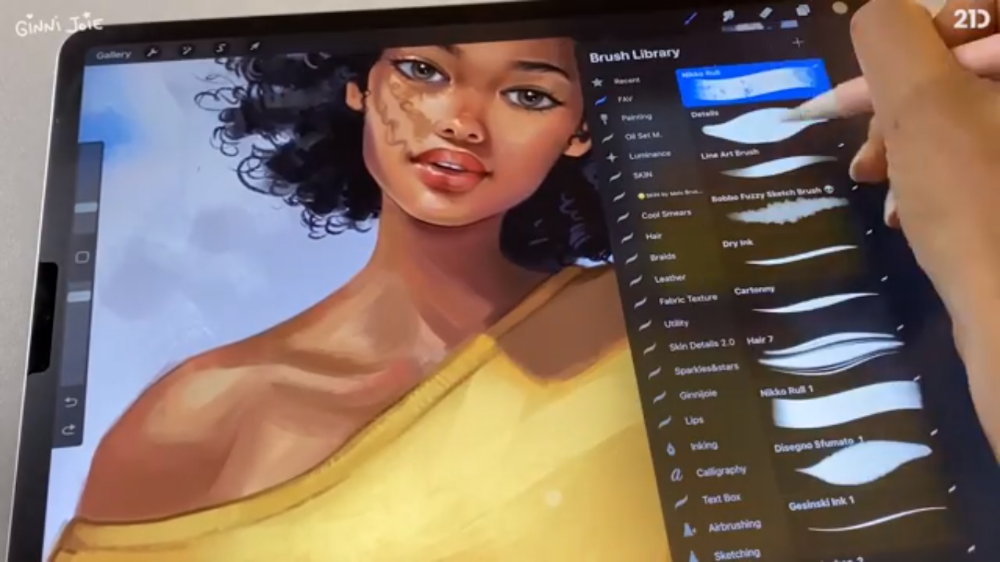
O Procreate é excelente para iniciantes devido à sua interface amigável para iPad e ao suporte ao Apple Pencil. O Procreate oferece uma experiência criativa acessível, mas poderosa, sem sobrecarregar os novos usuários.
No entanto, o Procreate não é apenas para iniciantes.
Os artistas profissionais geralmente destacam sua fluidez e capacidade de resposta, que são fundamentais para esboços rápidos e trabalhos detalhados.
Os novos usuários consideram o layout do Procreate simples e os atalhos intuitivos, facilitando a curva de aprendizado inicial.
Um exemplo é um toque com dois dedos para desfazer e um toque com três dedos para refazer, facilitando aos iniciantes a correção instantânea de erros.
Embora os conceitos básicos do Procreate possam ser aprendidos em horas, o verdadeiro conforto com os recursos diferenciados do Procreate, como modos de mescla de camadas e dinâmica de cores, pode levar algumas semanas.
O curso “Desenho no Procreate para iniciantes” é um ponto de partida ideal para sua jornada no Procreate.
Ele oferece um caminho de aprendizado bem estruturado, guiando você desde o básico das técnicas de pincel até habilidades mais complexas, como sombreamento e texturização.
Nosso resumo sobre Cursos de procriação tem uma lista de cursos de procriação para você escolher.
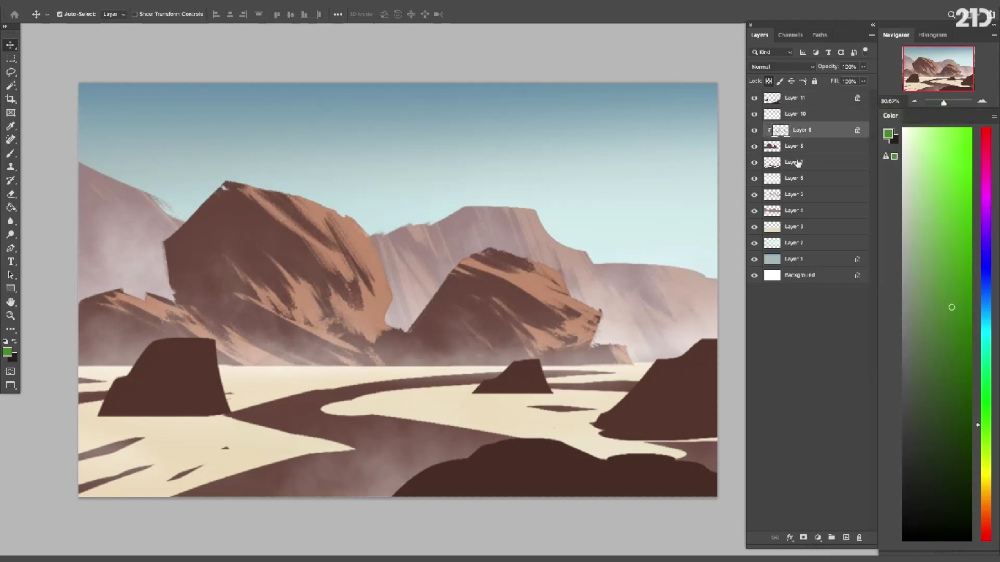
O Photoshop é um elemento básico da arte digital, especialmente para trabalhos de nível profissional. Sua disponibilidade no Mac, Windows e iPad o torna acessível a todos.
Embora seja mais complexo do que o Procreate, o conjunto de ferramentas abrangente do Photoshop o torna uma ferramenta valiosa para aprender.
Ele apresenta aos usuários as técnicas básicas de arte digital e os prepara para habilidades avançadas, como gerenciamento de camadas complexas, texturização detalhada e composições intrincadas.
O aprendizado do Photoshop, apesar de sua complexidade inicial, equipa os iniciantes com um conjunto de habilidades versátil que é benéfico em vários ambientes profissionais.
Sua ampla variedade de recursos, desde a edição de fotos até ilustrações digitais complexas, garante que o Photoshop continue sendo uma ferramenta relevante e poderosa à medida que suas habilidades aumentam.
Para os iniciantes que escolhem o Photoshop, o curso “Drawing in Photoshop for Beginners” é abrangente, cobrindo desde as técnicas básicas até as avançadas. Esse curso se concentra na interface do Photoshop, nas ferramentas essenciais, nos ajustes de cores e no gerenciamento de camadas, garantindo uma base sólida para que os iniciantes desenvolvam suas habilidades de arte digital.
Sua escolha entre o Procreate e o Photoshop depende da profundidade e do alcance que você deseja explorar. O Procreate é excelente para desenho e pintura digital simples
No entanto, se estiver considerando um escopo mais amplo em ilustração que envolva camadas avançadas, texturização ou integração com outros softwares de design, o Photoshop oferece maior versatilidade. Ele é ideal se você pretende ter um futuro em diversos campos criativos ou em projetos de ilustração mais complexos.
À medida que os artistas digitais passam de iniciantes a intermediários, o domínio de recursos avançados de software torna-se essencial. Esse avanço aumenta a criatividade e a eficiência e permite uma expressão artística mais complexa e precisa. Aqui estão algumas habilidades que você aprenderá nesse estágio do seu progresso.
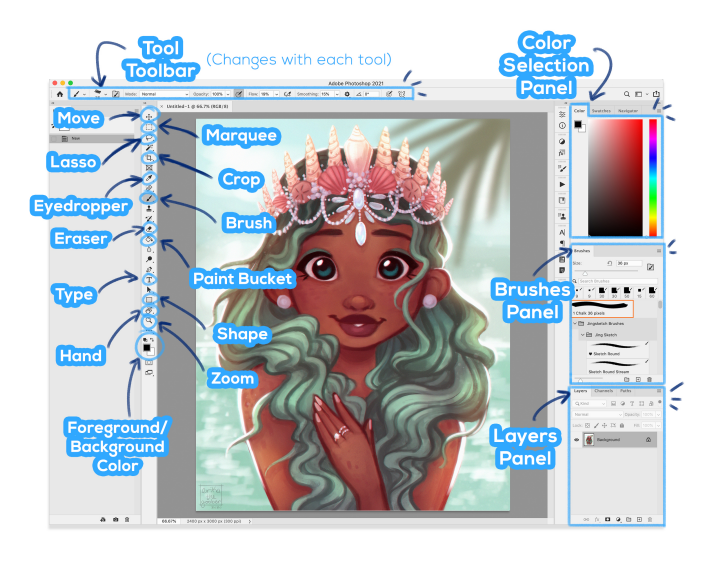
Aqui estão alguns cursos de arte digital que o ajudarão nessa etapa.
Para os entusiastas do Photoshop, o “Digital Drawing in Photoshop – Intermediate” é ótimo para aprender técnicas avançadas do Photoshop.
Para os alunos do Procreate, o curso “Como desenhar um personagem de desenho animado” é o caminho a seguir.
Os dois cursos oferecem uma riqueza de conhecimentos para refinar suas técnicas e dar vida às suas ideias com maior profundidade e precisão. Participe desses cursos para obter habilidades práticas que elevam sua arte digital.
Nesta etapa, você também pode explorar nossos outros cursos de ilustração digital.
Refinar sua interação física com o meio digital é essencial para se tornar um bom artista digital. Essas habilidades, fundamentais para seu desenvolvimento artístico, incluem:
Das páginas dinâmicas dos quadrinhos da Marvel às cenas vibrantes das animações da Disney, cada golpe de gênio começou com o domínio dos fundamentos da arte.
Mesmo os quadrinhos, desenhos animados e animações mais imaginativos dependem de princípios básicos como anatomia, perspectiva e teoria das cores.
A habilidade e o estilo são importantes, mas são construídos com base nessas habilidades básicas.
Quais são os fundamentos que todos os artistas precisam aprender? Vejamos.
O aprendizado de anatomia é importante para artistas digitais, especialmente para aqueles que criam personagens. Isso envolve o estudo da estrutura do corpo humano, incluindo músculos, ossos e como as diferentes partes são dimensionadas e conectadas.
Ser habilidoso nessas áreas é importante para fazer com que os personagens pareçam reais, sejam eles humanos comuns, super-heróis ou criaturas imaginárias.
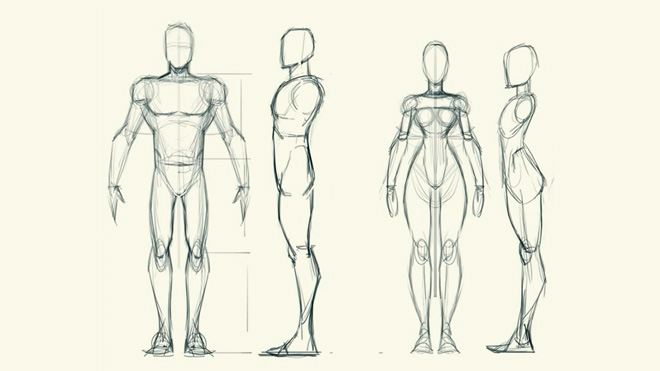
Para entender melhor a anatomia humana, os artistas praticam o desenho de figuras e o desenho de gestos. O desenho de figuras envolve o esboço de todo o corpo humano, prestando atenção ao seu tamanho e forma.
O desenho de gestos envolve a criação de esboços rápidos que capturam o movimento e a essência de uma pose, concentrando-se em linhas de ação e movimentos dinâmicos.
A perspectiva dá profundidade e dimensão à arte, permitindo que os artistas criem cenas que retratam com precisão as relações espaciais. Os tipos mais comuns incluem perspectivas de um ponto, dois pontos e três pontos, cada uma oferecendo um ângulo e uma ilusão de profundidade diferentes.
As técnicas de composição envolvem a compreensão e a aplicação de princípios como equilíbrio, contraste, ênfase, movimento, padrão, ritmo e unidade para criar peças visualmente harmoniosas e eficazes.
A habilidade de contar histórias consiste em tecer narrativas e emoções em seu trabalho, transformando ilustrações em histórias visuais envolventes que ressoam profundamente com os espectadores.
A compreensão da forma e do formato envolve a decomposição de objetos complexos em formas mais simples e básicas. Essa abordagem aprimora a integridade estrutural e a clareza de suas ilustrações, tornando-as visualmente mais eficazes e coerentes
A compreensão das proporções e da escala na arte garante relações precisas de tamanho entre os elementos, criando composições realistas e visualmente coerentes. É fundamental para obter credibilidade e profundidade nas obras de arte.
O Método de Loomis usa formas geométricas para representar proporções e características faciais com precisão, aprimorando o realismo nas ilustrações de personagens.
O método de pontos usa pontos cuidadosamente colocados como guias para organizar e dimensionar partes de um desenho. Isso ajuda a manter a consistência e a harmonia em todo o trabalho artístico. É especialmente útil para trabalhos detalhados, garantindo que todos os elementos estejam proporcionalmente alinhados e contribuam para um resultado visual unificado e atraente.
O desenvolvimento dessas habilidades é essencial para a criação de ilustrações digitais mais sofisticadas e refinadas.
O curso “Fundamentos do Desenho” é perfeito para solidificar suas habilidades essenciais, garantindo que sua arte se destaque e fale alto.
Este curso ajuda a aprimorar as habilidades e a elevar seu trabalho artístico para além do bom. Explore este curso para dar à sua arte aquela vantagem extra que ela merece.
Considere uma foto de um atleta em ação. A energia, a tensão – tudo está em sua pose.
À medida que você avança em sua jornada de arte digital, dominar a pose é fundamental. Essa etapa consiste em dar vida aos seus personagens por meio de suas posturas e gestos, fazendo com que eles se expressem e contem histórias. O aperfeiçoamento dessa habilidade eleva sua arte, transformando cada personagem em um contador de histórias dinâmico.
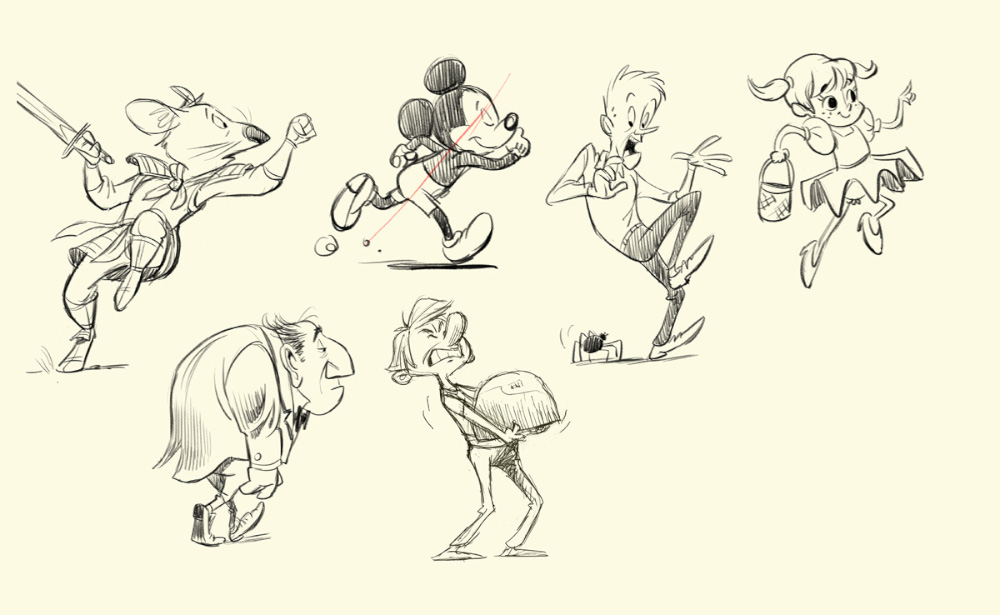
Aqui estão algumas técnicas que você deve aprender para dar vida aos personagens.
Verifique nossa postagem no blog “Principles of Animation” para obter detalhes.
Exploramos as nuances que dão vida aos personagens por meio de poses dinâmicas.
Faça o curso “Desenhando Poses de Personagem com Personalidade” da 21 Draw para aprender a arte de infundir emoção e movimento em seus personagens.
Na paleta do artista, a cor é mais do que apenas pigmento; ela é emoção, profundidade e história. Ela transforma uma mera ilustração em uma experiência visual vibrante.
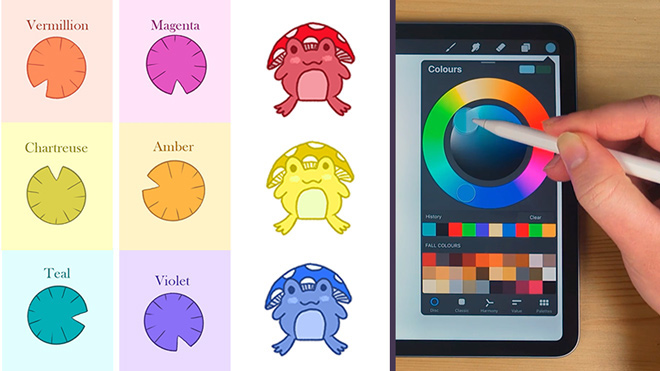
Vamos explorar como usar a cor de forma eficaz para aprimorar a expressão artística. Ele abrangerá tudo, desde os conceitos básicos do círculo cromático até as complexidades da psicologia das cores, equipando-o com as habilidades para dar vida à sua arte.
Vamos nos aprofundar em todos os aspectos da cor na arte.
O círculo cromático, uma representação circular das tonalidades das cores, mostra as relações entre as cores primárias, secundárias e terciárias. Compreendê-lo permite que os artistas criem combinações e harmonias visualmente atraentes.
O círculo cromático é crucial para selecionar cores complementares para contraste, cores análogas para harmonia e esquemas triádicos para equilíbrio. Esse conhecimento capacita os artistas a usar as cores de forma eficaz, aumentando o impacto visual e a ressonância emocional de suas obras de arte.
Cores quentes, como vermelhos e amarelos, evocam energia e calor, enquanto cores frias, como azuis e verdes, criam uma sensação de calma e recuam na obra de arte.
A compreensão das cores quentes e frias pode aumentar o impacto emocional e a percepção espacial. As cores quentes podem chamar a atenção e adicionar vibração, enquanto as cores frias podem criar profundidade e tranquilidade. Esse conhecimento é essencial para alcançar o equilíbrio e enfatizar pontos focais em suas composições.
A psicologia das cores explora o impacto das cores sobre as emoções e os comportamentos. Os artistas que utilizam esse conhecimento podem evocar sentimentos específicos, como serenidade com o azul ou excitação com o vermelho, aprimorando a profundidade emocional de seu trabalho.
Um exemplo famoso é o Período Azul de Pablo Picasso no início dos anos 1900. Um Picasso deprimido pintava predominantemente com tons azuis, refletindo sua tristeza e melancolia.
A hierarquia visual é a disposição dos elementos para indicar sua importância. A hierarquia direciona a atenção do visualizador. Os artistas usam técnicas de contraste e saturação de cores para destacar os principais elementos, transmitir o clima e aprimorar a composição geral. Isso ajuda a criar obras de arte envolventes e eficazes.
Esquemas de cores são combinações de cores, como monocromáticas, análogas, complementares e triádicas, com base em princípios de harmonia.
Compreender esses esquemas permite que os artistas criem trabalhos visualmente atraentes e coesos, transmitam humor de forma eficaz e aumentem o valor estético. O domínio dos esquemas de cores é crucial para que os artistas garantam que suas obras de arte sejam visualmente impressionantes e emocionalmente ressonantes para os espectadores.
A harmonia de cores envolve o uso de combinações de cores esteticamente agradáveis com base em relações de cores específicas.
Compreendê-la permite que os artistas criem composições equilibradas e visualmente atraentes. Ele ajuda a evocar as emoções desejadas, unificar elementos e aprimorar o impacto geral da obra de arte, tornando-a mais envolvente e ressonante para o público.
O Método da escala de cinza é uma técnica da teoria das cores em que os artistas primeiro criam suas obras de arte em tons de cinza antes de adicionar cores. Esse método ajuda os artistas a entender o valor, que é a claridade ou a escuridão de uma cor, independentemente de sua tonalidade. Ao dominar os valores em escala de cinza, os artistas podem aprimorar a profundidade, o contraste e o humor de seus trabalhos.
Aprofundar-se na teoria das cores transforma a arte, imbuindo-a de narrativas impactantes.
Faça nosso curso “Introdução à Teoria das Cores” para dominar o uso das cores, as técnicas de mistura e os efeitos psicológicos das cores.
Este curso é um recurso detalhado para artistas que desejam aprimorar sua compreensão e aplicação de cores em formas de arte tradicionais e digitais.
Você já se perguntou como os filmes antigos em preto e branco alcançavam a beleza cinematográfica sem cor ou por que algumas fotos em preto e branco são tão impactantes? A resposta é a luz.
Aprender como a luz se comporta, interage com os objetos e afeta a percepção lhe dá uma base sólida para criar ilustrações realistas e dinâmicas.
Compreender o tipo de iluminação afeta o humor, a profundidade e o realismo da obra de arte. Os principais tipos de luz incluem:
Compreender as fontes de luz é essencial, pois elas influenciam a forma como as cenas são percebidas.
Por exemplo, as fontes de luz natural, como o sol, criam um clima e um padrão de sombra diferentes das fontes artificiais, como as lâmpadas. Esse entendimento permite que os artistas retratem com precisão a hora do dia, o clima ou os ambientes internos.
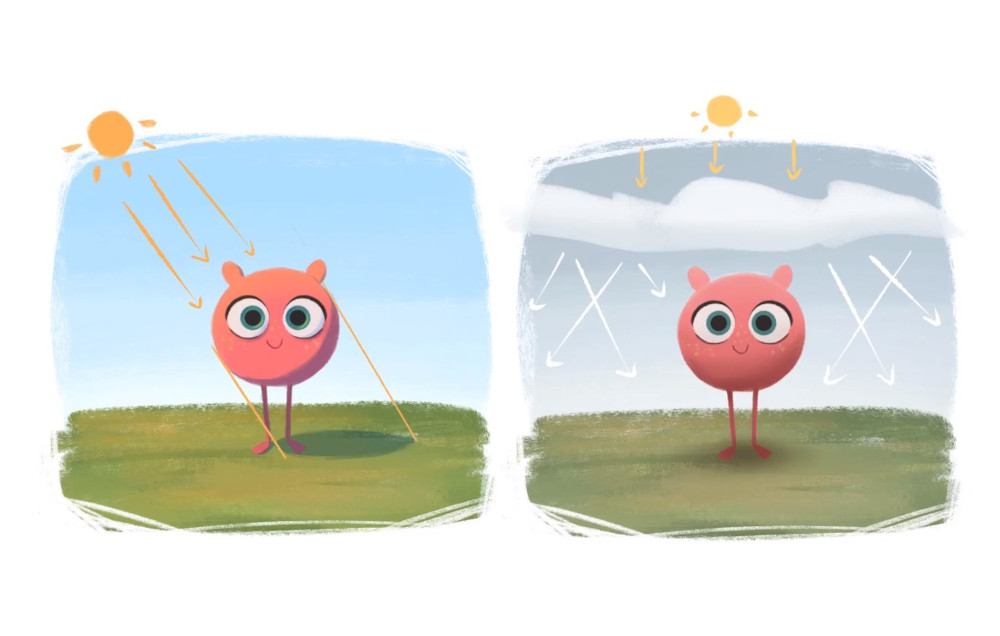
As sombras criam uma sensação de volume e aterramento, mostrando onde a luz não chega. Os realces indicam os pontos mais altos em que a luz atinge diretamente o objeto.
Essa compreensão impacta a obra de arte ao aprimorar sua sensação tridimensional, tornando-a mais realista e envolvente.
Por exemplo, sombras e realces corretamente posicionados podem transformar um círculo plano em uma esfera, dando-lhe uma aparência realista. O uso de sombras e realces é essencial para criar uma arte visualmente atraente e crível.
Na arte, os reflexos e as refrações são técnicas usadas para simular como a luz interage com as superfícies.
Os reflexos imitam a forma como a luz incide em superfícies brilhantes, criando um efeito espelhado. As refrações mostram como a luz se curva através de materiais transparentes, como vidro ou água
As ferramentas usadas para esses efeitos incluem pincéis específicos, modos de mescla de camadas e filtros em softwares como o Photoshop ou o Procreate. Essas ferramentas permitem que os artistas reproduzam de forma realista o comportamento da luz em diferentes superfícies, adicionando profundidade e autenticidade ao trabalho artístico.
Para adicionar fontes de luz em arte digital usando softwares como o Photoshop ou o Procreate:
Para dominar a arte de usar luzes e sombras na arte, faça nosso curso, “Mastering Lighting and Shading.” Esse curso oferece insights aprofundados e técnicas práticas que elevarão sua compreensão e aplicação da iluminação em seu trabalho artístico.
A prática do design de personagens ajuda os artistas a aprender como criar e transmitir histórias e emoções por meio da arte e a se conectar com o público em um nível mais profundo.
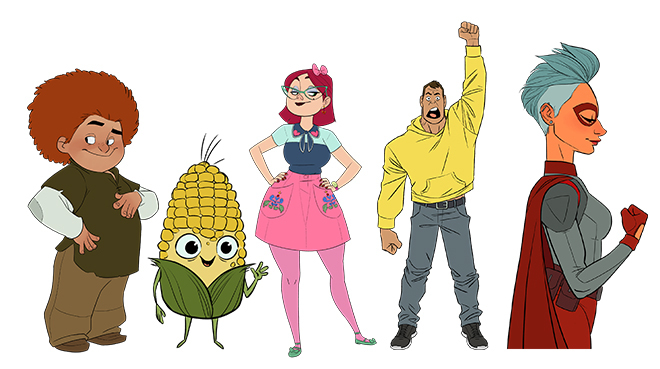
Agora, vamos explorar os principais aspectos do design de personagens que ajudam os artistas a contar histórias envolventes e a se conectar com seu público em um nível mais profundo.
O design de personagens vai além do desenho, abrangendo a narrativa, os arquétipos, o vestuário e muito mais. Esses elementos são vitais para a criação de personagens atraentes.
Faça o curso “Fundamentals of Character Design” na 21 Draw, que oferece insights detalhados sobre essas áreas, ajudando os artistas a aprimorar suas habilidades de criação de personagens.
Esta seção é o seu guia sobre como usar cores, texturas e luz em seu trabalho digital.
Criando uma nova tela: Escolha o tamanho correto da tela e familiarize-se com a interface da ferramenta digital.
Configuração do espaço de trabalho: Organize seu espaço de trabalho com eficiência, abordando as configurações, os gestos, os atalhos e a seleção de pincéis do Procreate.
Encontrando inspiração e usando referências: Discuta a importância de reunir e adaptar referências de forma criativa.
Desenvolvendo a ideia: Guia para esboçar ideias, criar miniaturas e entender a composição para desenvolver seu conceito.
Esboçando planos de fundo e personagens: Misture os personagens perfeitamente aos planos de fundo, garantindo o tamanho e a perspectiva corretos.
Anatomia semi-realista: Foco no desenho de partes do corpo realistas e na colocação de personagens no ambiente.
Seleção de cores: Aprenda noções básicas de teoria das cores, escolha de cores e uso de máscaras de recorte e bloqueios alfa.
Cores planas e variações: Explica o significado das cores planas e como adicionar variações para obter profundidade.
Modos de mesclagem de camadas: Use os modos de mesclagem para criar efeitos de iluminação e sombreamento.
Entendendo as fontes de luz: Discuta a criação de sombras e destaques e a adição de efeitos especiais de iluminação.
Adicionando detalhes: Enfatize a arte de linhas coloridas, intensifique a iluminação e limpe as bordas.
Ajustes finais: Ajuste o contraste usando curvas e equilibre os tons de cores.
Explore os cursos do 21 Draw “Digital Illustration with Procreate” e “Dark Fantasy Character Design” para um aprendizado aprofundado.
Esses cursos oferecem insights práticos sobre o uso do Procreate e do Photoshop, complementando perfeitamente as habilidades que você acabou de começar a desenvolver.
A mídia social é o estúdio do artista moderno, onde as conexões são tão importantes quanto a arte. Saiba como usar a mídia social como uma vitrine e uma comunidade onde sua arte repercute e gera conversas.
Encontrando sua voz artística: Destaque a singularidade do seu estilo artístico nas mídias sociais. Diferencie-se mostrando seu talento e criatividade.
Engajamento com a comunidade: Concentre-se na construção de relacionamentos por meio da participação ativa em comunidades artísticas. Envolva-se com seu público respondendo a comentários, colaborando com colegas e participando de desafios artísticos.
Compreensão da análise e do algoritmo: Use insights de dados para adaptar seu conteúdo para obter melhor alcance. Saiba como interpretar a análise de mídia social para entender o que repercute no seu público.
Práticas recomendadas de criação de conteúdo: Inclua dicas para criar conteúdo envolvente e de alta qualidade que repercuta entre os seguidores. Isso inclui a escolha dos recursos visuais certos, a elaboração de histórias envolventes e a manutenção de um cronograma de postagem consistente.
Design de conta e marca: Crie uma identidade on-line coesa e visualmente atraente que reflita seu estilo artístico exclusivo.
Uso eficaz de hashtags e legendas: Para utilizar hashtags e legendas de forma eficaz, pesquise hashtags relevantes, combine hashtags de nicho e gerais, escreva legendas envolventes com histórias, use chamadas para ação e mantenha-se atualizado com as tendências. Essa abordagem aumenta a visibilidade e o envolvimento nas mídias sociais.
Aproveitar o poder da mídia social é uma etapa essencial da sua jornada de arte digital. Embora esta seção tenha fornecido estratégias importantes, sempre há mais a aprender.
Faça nosso curso “Mídia social para artistas” para dominar o uso da mídia social para mostrar seu trabalho e criar uma comunidade. Esse curso oferece treinamento abrangente sobre o compartilhamento eficaz de arte digital nas mídias sociais. Ele abrange aspectos importantes, como envolvimento do público, estratégia de conteúdo e técnicas específicas de plataforma, o que o torna um recurso inestimável para artistas digitais.
Como um chef que gosta de experimentar diversas receitas, um artista floresce ao se aprofundar em vários gêneros.
Explorar um novo gênero pode revelar talentos ocultos, seja capturando a elegância de uma gazela ou a serenidade de uma paisagem ao pôr do sol. Cada assunto distinto contribui com uma cor exclusiva para sua paleta artística, aumentando a profundidade e a riqueza de sua expressão criativa.
Para diversificar suas habilidades de ilustração digital para o crescimento artístico, domine os fundamentos da arte, organize suas ferramentas e refine as técnicas de iluminação.
Utilize tutoriais e cursos on-line, aprofunde-se em produtos digitais e mantenha-se conectado com a comunidade artística.
Procure feedback, realize projetos pessoais e aprenda continuamente sobre as tendências do setor.
A paciência e a persistência são fundamentais nesse campo em constante evolução. Essas etapas expandirão seus horizontes criativos, enriquecendo seu repertório artístico a cada novo gênero explorado.
Se você quiser explorar como analisar referências e criar personagens animais divertidos e cheios de personalidade, confira nosso curso “Designing Fun Animal Characters“, ministrado por Rodgon.
Para os interessados em se aventurar na ilustração de paisagens, “Introduction to Landscapes“, de Philip Sue, oferece um detalhamento passo a passo do processo.
Cada curso promete enriquecer seu repertório artístico, trazendo cores exclusivas para sua paleta e desbloqueando novas dimensões na expressão criativa.
Sua jornada na ilustração digital é mais do que aprender habilidades; trata-se de moldar sua voz criativa. Desde o domínio de softwares como Procreate e Photoshop até o aprofundamento em cores e luzes, cada etapa é uma pincelada em sua tela de potencial
Abrace esse caminho com entusiasmo e deixe seu estilo único brilhar. Lembre-se de que toda obra-prima começa com uma única e ousada pincelada. Você está pronto para criar a sua?